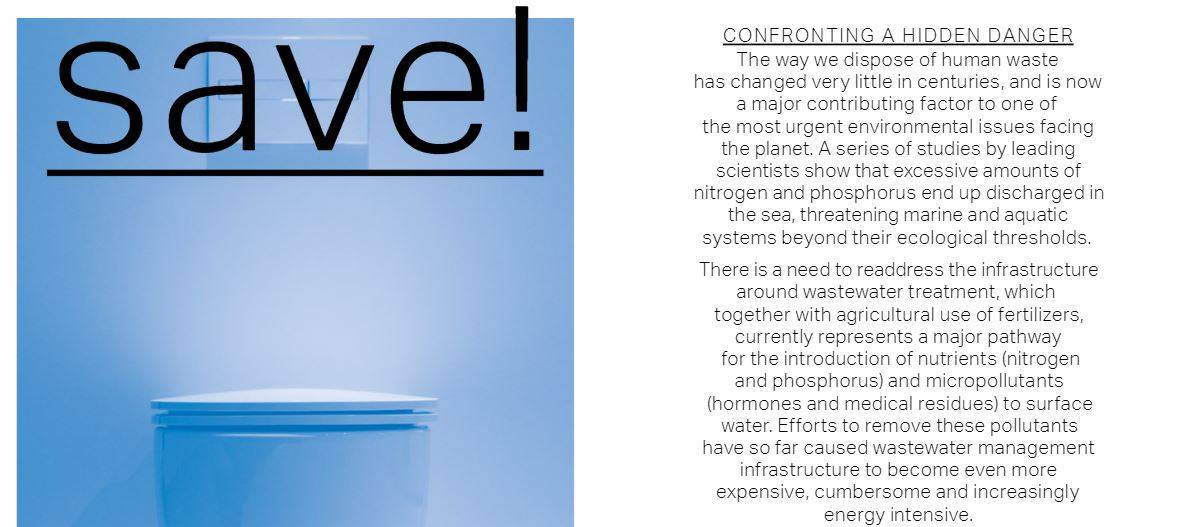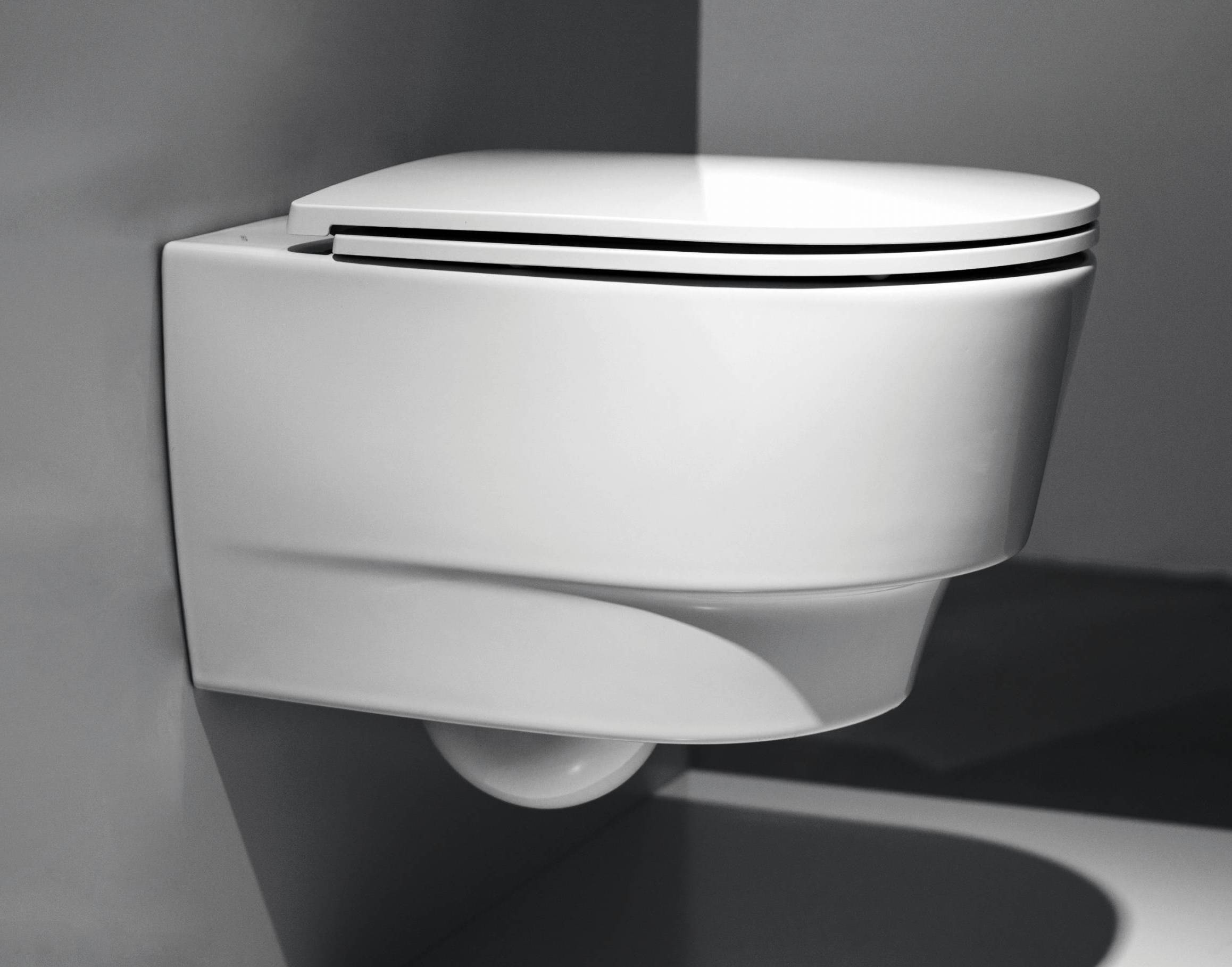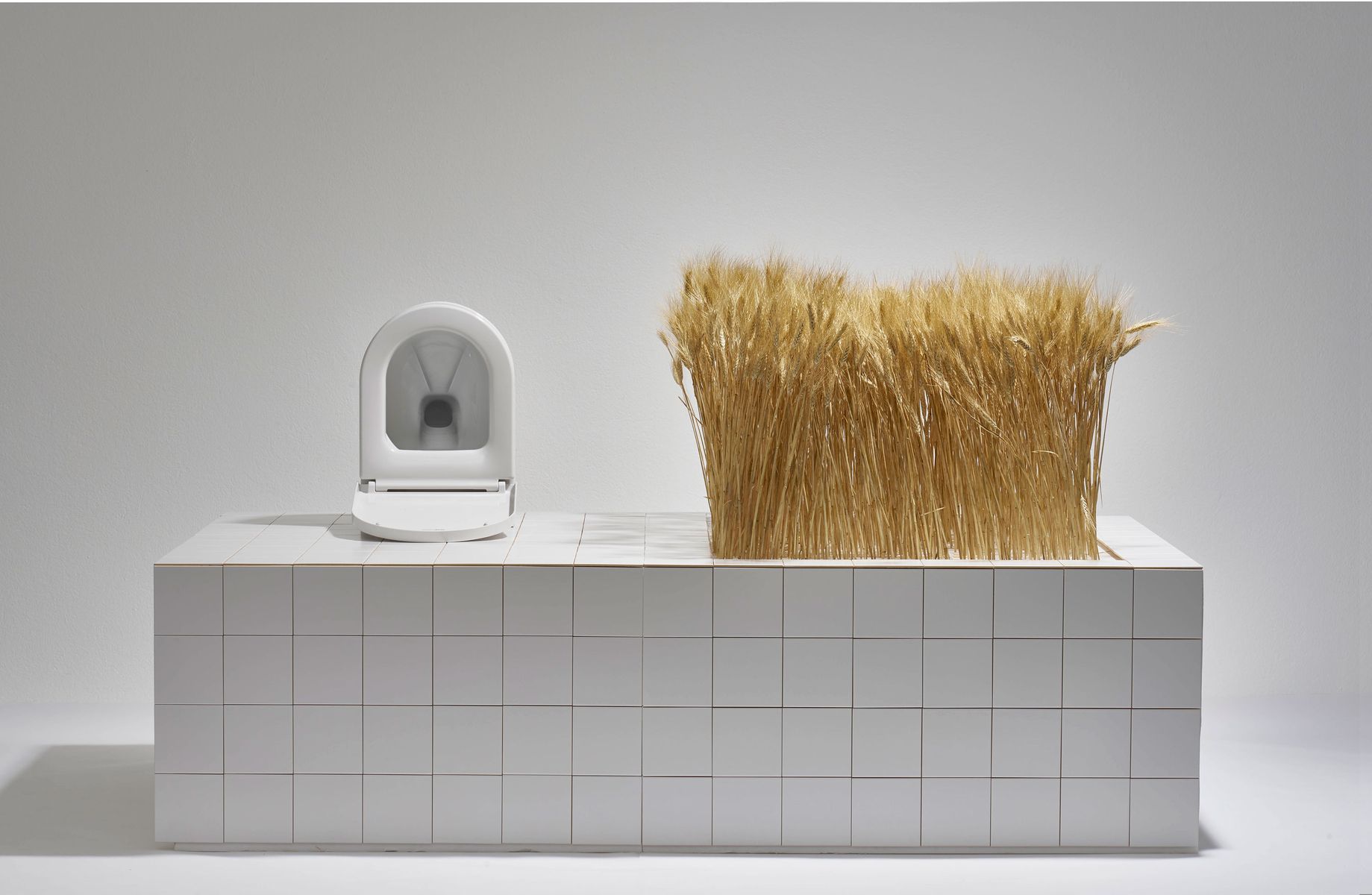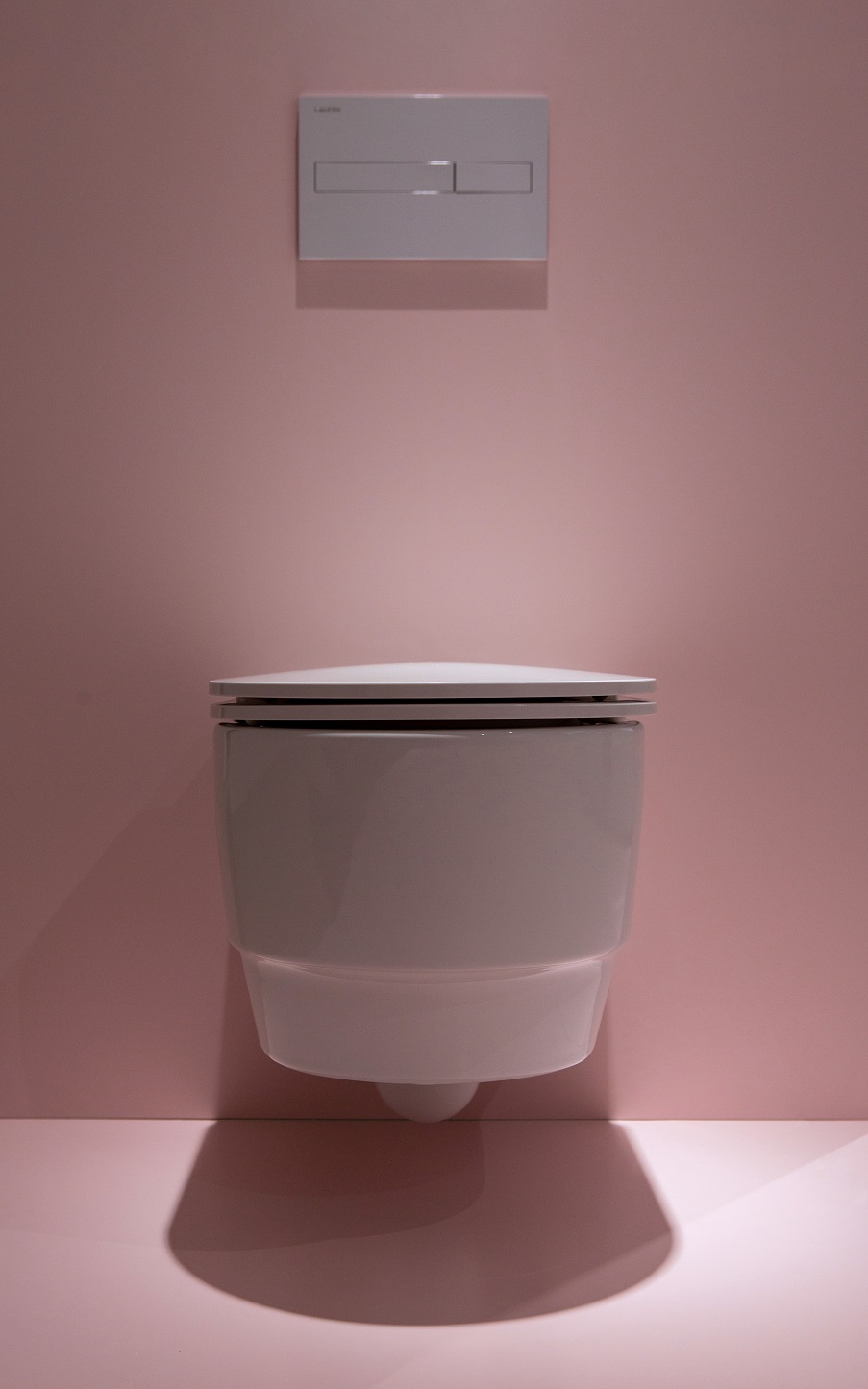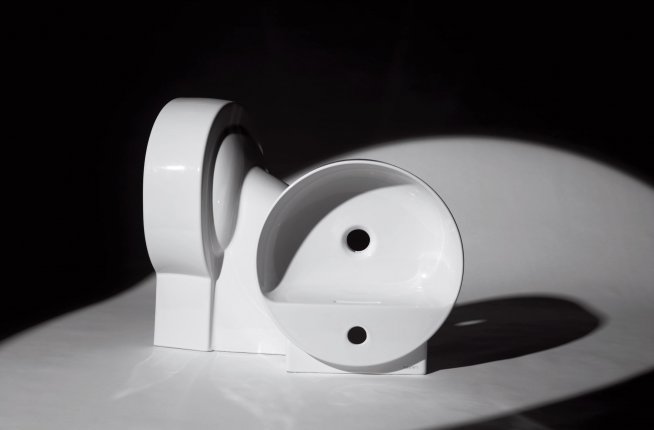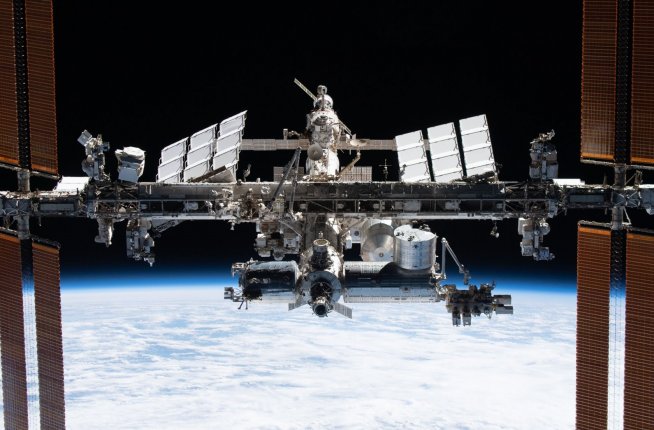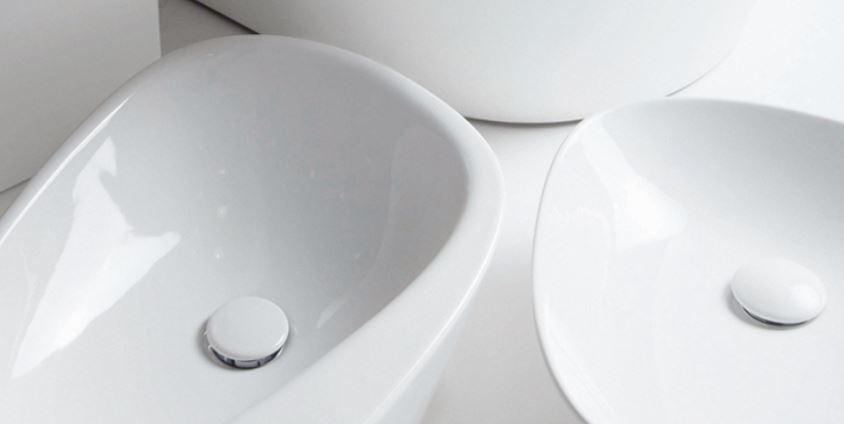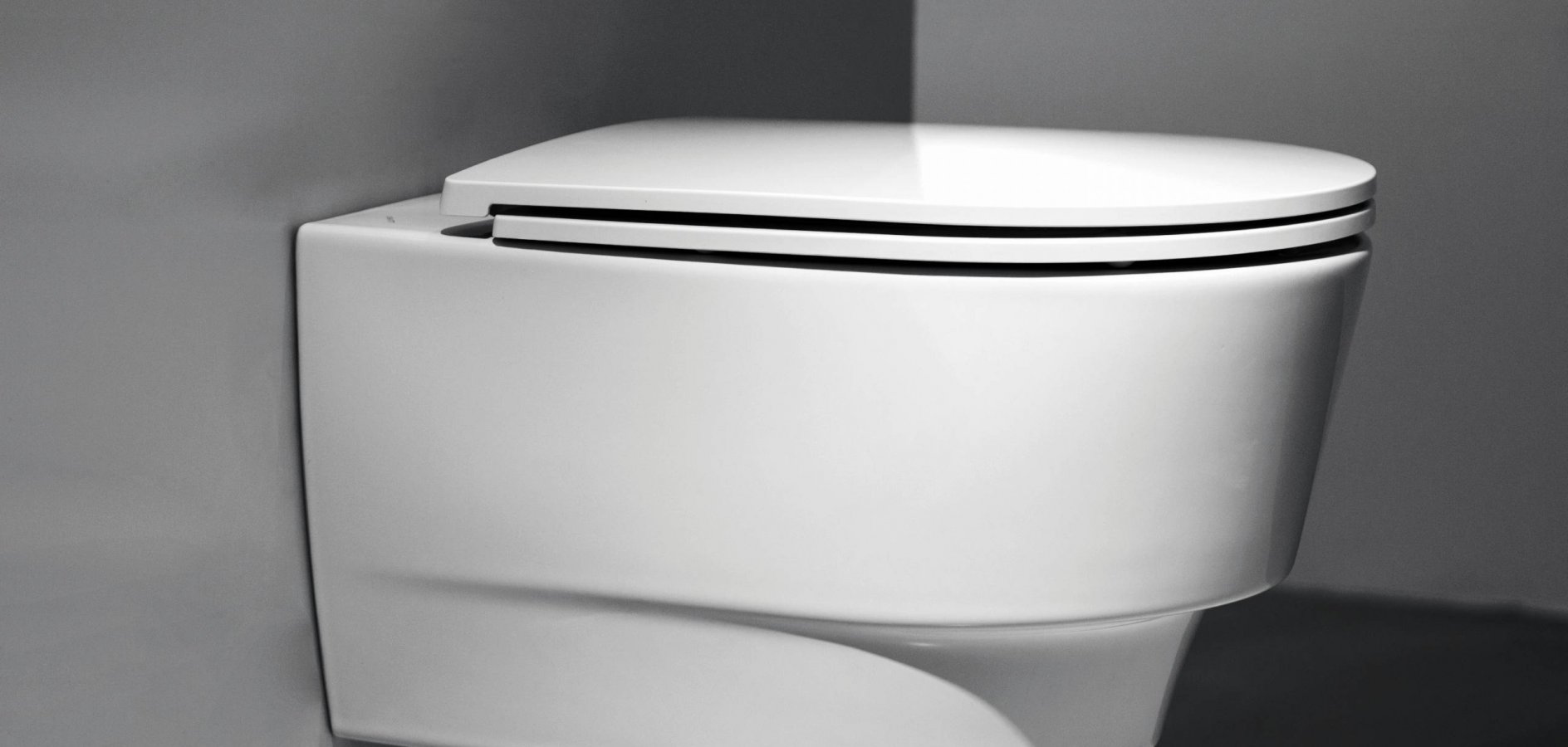
Save! Smart sanitation for a sustainable future
Urine is something that most people probably don’t think much about, and when they do, it’s rarely in a positive context. That is a shame, because there is much more potential in urine than you might think. It is worth considering urine as a raw material.
save! is a pioneering urine separation toilet that takes a step towards sustainable wastewater management by preserving the nutrients contained in urine and at the same time protecting the environment from harmful substances.
PRESERVING NUTRIENTS
Human urine contains approximately 95% of water.
Furthermore, urine has a high concentrations of nitrogen (N), phosphorus (P) and potassium (K). These are a valuable nutrients used particularly in agriculture, for the production of fertilizers. In times of increasingly scarce resources and dwindling raw materials, it is well worth considering urine as a source of phosphorus.
Urine is also rich in nitrogen, which is an essential component of the nitrogen-based fertilizers used in agriculture. It contains 3-7 g of nitrogen per litre of urine, a resource that is also worth using.
There are many more possible uses for this often spurned liquid gold. British scientists, for example, were able to generate electricity with the help of the bacteria contained in the urine. Although the amount of electricity generated is low, it is still enough to power a mobile phone, for instance. Urine is traditionally used in crafts to tan leather, sometimes as a household cleaning agent. And of course there is – albeit not undisputed – the use in human and veterinary medicine.
Decisive is not to allow the potential use of urine to go wasted in the sewage system.
Urine isn’t a problem that ought to be discarded as quickly as possible.
Urine is a valuable resource.
PROTECTING WATER BODIES
At present, the nutrients in urine often reach the natural waters directly, going through the wastewater treatment plants largely untreated. Together with the quantities of nutrients that are introduced into the natural waters as a result of over fertilisation in agriculture, this results in over-saturation of the waters with too many nutrients, which in turn causes major problems for the environment. Nutrient becomes pollutant.
When introduced into the water system, nutrients such as nitrogen and phosphorus do exactly what they do on land: they promote plant growth, thus causing algae bloom.
The bacteria that decompose the algae extract oxygen from the water, killing the entire life in the affected region and causing the so-called “dead zones”. This has an impact on biodiversity and the health of marine systems, as well as on the economy, particularly fisheries and tourism.
In addition to the nutrient input, human urine is responsible for problematic micro pollutants in wastewater, namely hormones and drug residues. Efforts to remove these pollutants have made wastewater management infrastructure more expensive, complex and energy-intensive.
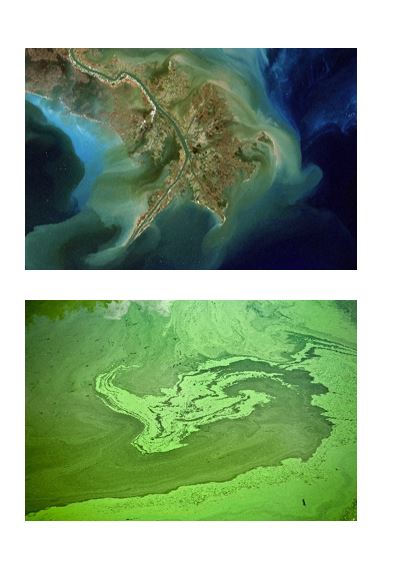
A CIRCULAR CONCEPT
As it stands, agriculture relies heavily on synthetic fertiliser, for which the phosphorus is mined out of the ground (approx. 80% of the reserves of phosphorus are concentrated in Morocco) and the nitrogen is taken from the atmosphere through the Haber-Bosch process, which requires temperatures of up to 550 degrees Celsius and pressure of up to 350 bar to accelerate the naturally slow reaction. With more than 145 million tons manufactured annually, this is one of the most energy-intensive manufacturing processes on the planet, consuming 3 to 5 percent of the world’s annual natural gas production.
The larger part of the fertiliser applied on agricultural land is absorbed by the crops, subsequently ingested by people, then eliminated again through human waste and flushed away through the sewage system, which takes everything to a wastewater treatment plant.
Since the mid-1990s, scientists have been exploring alternative ways to manage wastewater. The Swiss Research Institute for Aquatic Science EAWAG, one of the world’s leading water research institutes, is pursuing a particularly interesting direction – “Source Separation Technology”, in which domestic wastewater is separated at source into urine, feces and grey water.
If the waste streams are separated as soon as they are produced, they can be processed more sustainably in order to recover valuable resources, and wastewater management becomes part of the circular economy. In addition to that, the effort required at the wastewater treatment plants is reduced immensely, as 1.5 litres of human urine currently contaminate approx. 180 litres of wastewater.
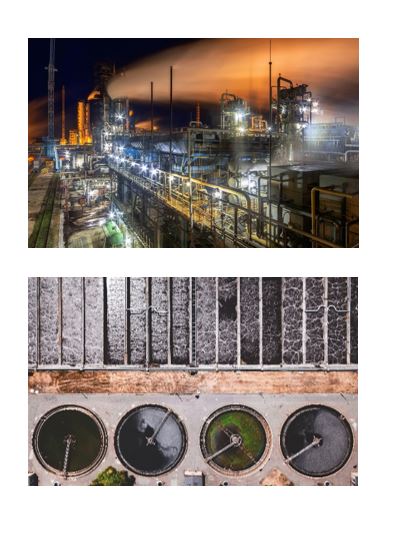
TECHNICAL INFORMATION
The key innovation in “save!” is the “urine trap”, created by EOOS Design. It uses the hydrodynamic principle of the teapot effect to conduct the urine towards a concealed outlet using only surface tension. The intelligent design of the ceramic body ensures that the urine separation occurs irrespective of whether the toilet is used by a man, a woman or a child. Flushing water, which is discharged at a much higher rate and speed, runs down the regular siphon. The same applies to solids and toilet paper, which also fall into the siphon.
LAUFEN has applied this principle to the wall-mounted WC and redesigned it with a urine channel to optimize its performance. Thanks to the perfect, almost imperceptible integration of the technology into the ceramic body, the WC achieves an elegant aesthetic and can therefore be integrated into sophisticated bathroom designs without any compromises.
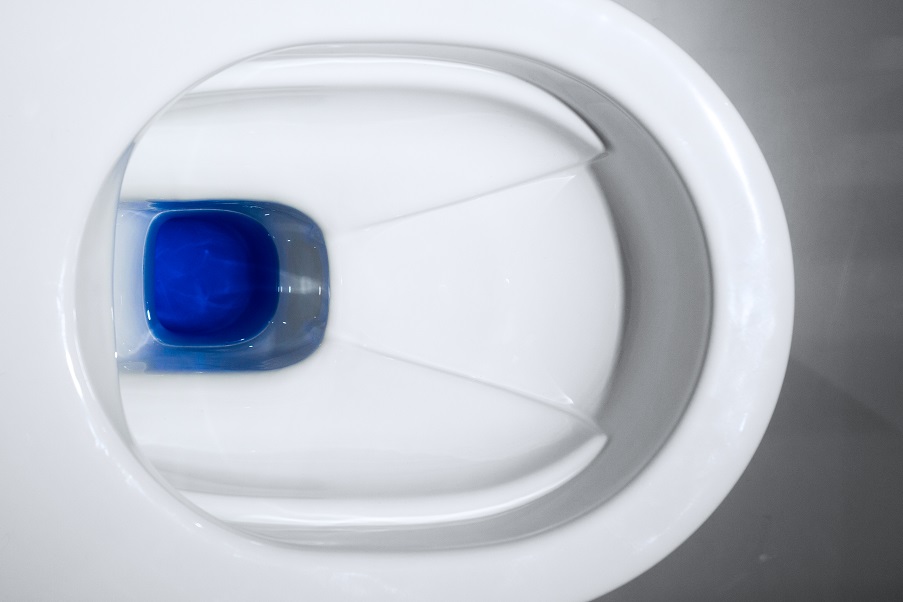
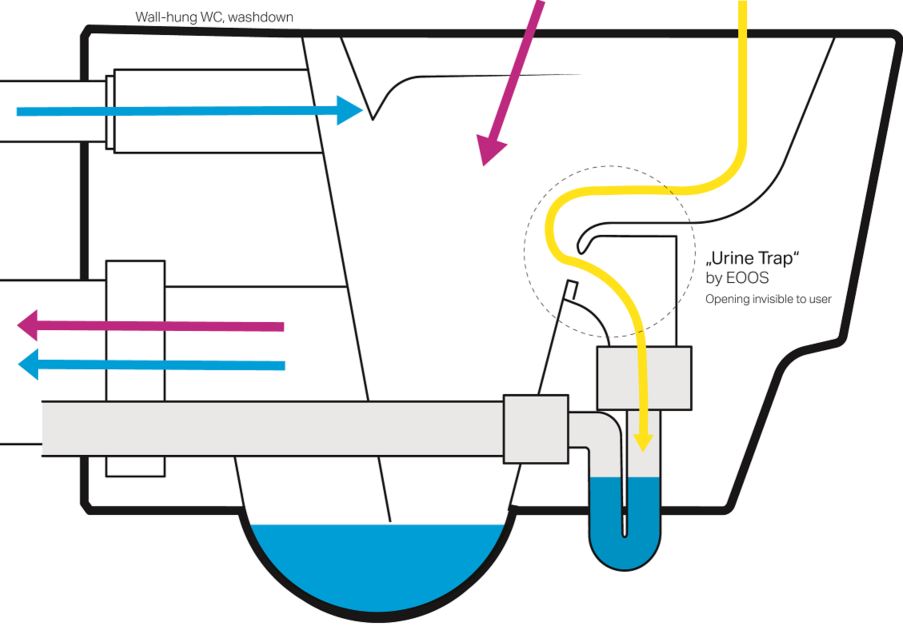
save! has been developed for the European market and is the first separation toilet to meet the latest industry standards. The patent-pending WC is approved according to EN 997 and EN 14055. Compliance with existing functional and connection standards is also ensured.
The odor trap in the urine siphon has a filling capacity of 75ml and is LGA tested, ensuring water exchange with every flush. The urine siphon can be serviced or replaced without removing save! from the wall.
The yellow and black water pipes require installation in conjunction with a LAUFEN installation system, which guarantees standardized, pre-set flushing conditions and increases installation safety through a pre-assembled mounting cuff.
LAUFEN has applied this principle to the wall-mounted WC and redesigned it with a urine channel to optimize its performance. Thanks to the perfect, almost imperceptible integration of the technology into the ceramic body, the WC achieves an elegant aesthetic and can therefore be integrated into sophisticated bathroom designs without any compromises.
save! is the first urine separation toilet that meets all industry standards. Rimless and wall-mounted, “save!” means having to compromise neither on comfort, nor on hygiene.
